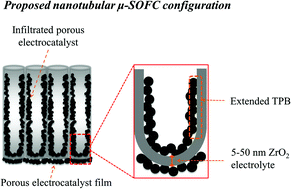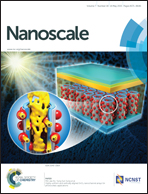First-time electrical characterization of nanotubular ZrO2 films for micro-solid oxide fuel cell applications
Abstract
In this work, anodically grown ZrO2 nanotubes (NTs) are examined for the first time for use in micro solid oxide fuel cell (μ-SOFC) applications. This is due to their high surface area to volume ratio and useful nanoscale morphological features (e.g., 5–100 nm thick NT bases that could serve as the electrolyte layer). To understand their full potential for these applications, the determination of their electrical properties is necessary. Therefore, ZrO2 NTs, in the form of a uniform and crack-free film, were obtained by the two-step anodization of Zr foil in aqueous solutions. The films exhibited excellent adhesion to the Zr substrate, which facilitated impedance spectroscopy analyses, used for the first time to obtain the resistivity of the nanotubular array separately from the contact resistances. This gave a conductivity of the ZrO2 NTs of 1.6 × 10−6 S cm−1 at 600 °C in N2, approximately twice that reported for dense ZrO2 films measured at the same temperature in air, and also a very reasonable activation energy of 0.90 eV in the 400–600 °C temperature range.


 Please wait while we load your content...
Please wait while we load your content...